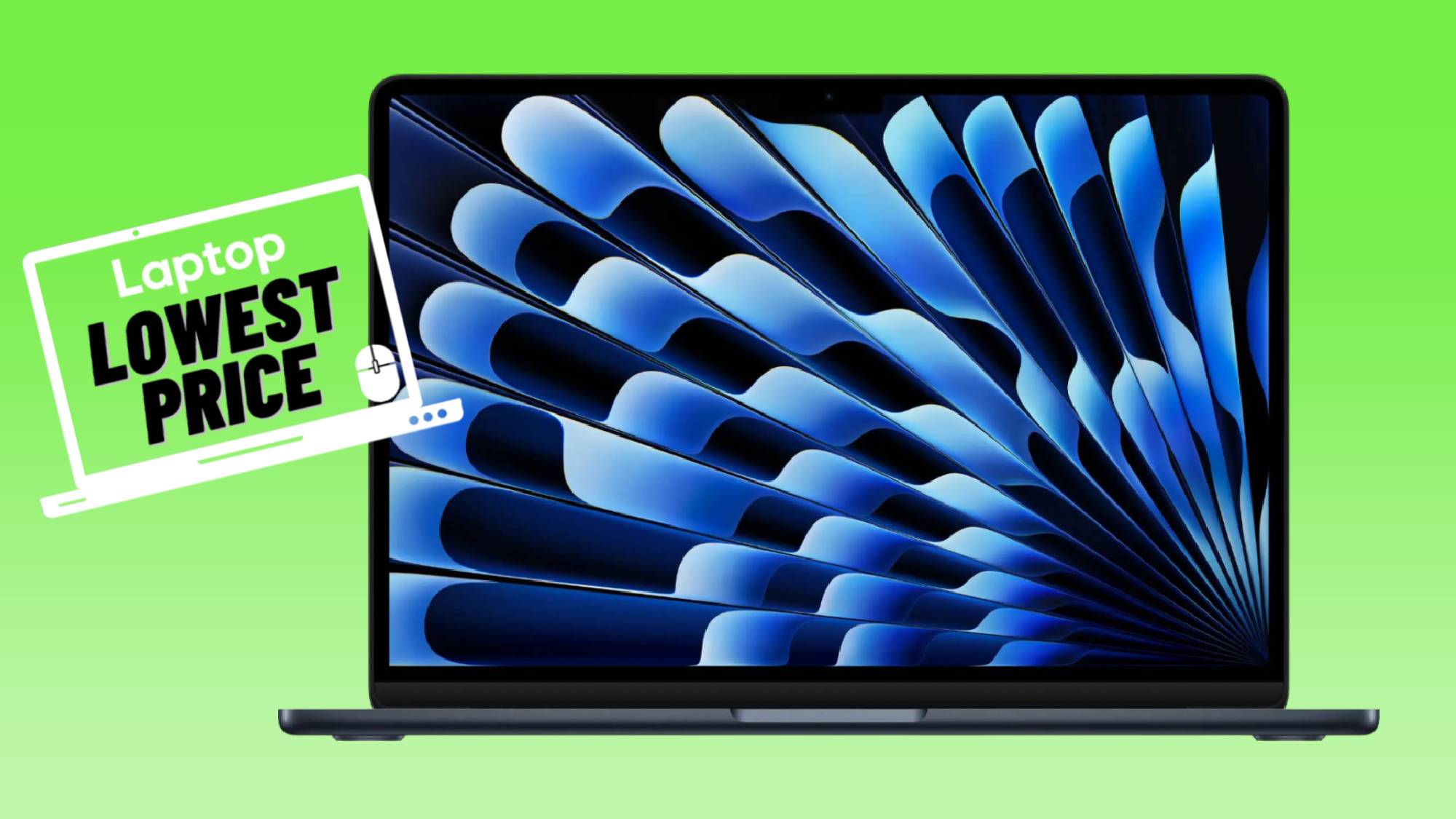Laptop Mag Verdict
The 17.3-inch Maingear Pulse 17 gaming notebook combines power, speed and portability in a smoking-hot and thin chassis.
Pros
- +
Head-turning design
- +
Thin and extremely portable for 17-inch laptop
- +
Fast dual SSDs
- +
Lovely 1080p display
- +
Solid battery life
Cons
- -
Fans can get loud
- -
Runs hot while gaming
- -
Display colors not as accurate as competition
Why you can trust Laptop Mag
While some laptop makers are taking it slow when it comes to portable gaming laptops, Maingear is racing like a bat out of hell. The company's latest offering, the Pulse 17 ($2,347 as tested, $2,199 to start) gives gamers the power they've come to expect in a slim chassis, complete with an automotive-class paint job. However, with so much focus on portability, the company made some compromises. Are they merely bumps on the road or a speed trap?
Design
One look at the Pulse 17 is enough to get your heart racing. Both the lid and undercarriage of the laptop have a bright-red Rosso Scuderia Glasurit paint job -- the same paint used on Porsche and BMW. The glossy finish is resistant to fingerprints and helps make the black MSI logo on the lid pop.
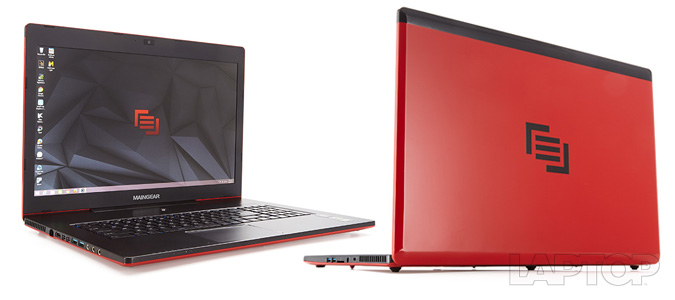
While lovely to look at, the high-gloss finish can be slippery. To guard against inadvertent drops, the notebook has a large square of black, fuzzy fabric attached to the rear of the undercarriage.
Maingear offers seven other hues (alpine white, burnt orange metallic, furious fuchsia, plum crazy, speed yellow, synergy green and vertigo blue mica) for an additional $199. Color-crazy consumers can also get a custom paint job for $249 or go for the free black brushed-aluminum finish with acrylic trim.
Although the Pulse 17 looks fresh, it also looks very familiar. That's because this rig uses the same chassis as the MSI GS70 Stealth Pro. That's not a bad thing, as we're fans of the laptop's black aluminum interior.
A large chrome power button takes center stage above the large vent that runs the length of the keyboard deck. Below, the multicolored, backlit keyboard resides in a slight recess above a large, chrome-lined touchpad.
Just like the GS70 Stealth Pro and its predecessor, the GS70, the Pulse 17 is superslim, measuring 16.47 x 11.29 x 0.85 inches. However, at 6.2 pounds, this system is slightly heavier than both models, which weigh 6 pounds each. Compared to the Digital Storm Krypton (8.6 pounds, 1.81 inches thick) and the Alienware 17 (9.2 pounds, 2.26~2.23 inches), the Pulse 17 could almost be considered tiny.
Lighting and Macros
While MSI has moved on to the SteelSeries Engine UI for its customizable keyboard backlighting, Maingear continues to use KLM software. The program was simple enough to use, letting us assign one of 28 colors and six effects to the keyboard's three designated zones.
We quickly created several profiles with each of the effects. However, the SteelSeries Engine UI provides more in-depth customization, allowing us to create macros and bind them to individual keys on the keyboard. You can also layer up to four color layers on one profile and switch between them on the fly.
Display
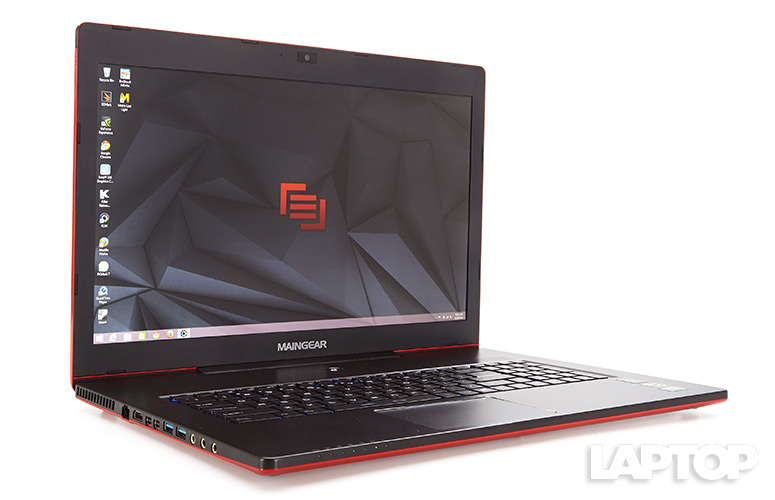
Click to EnlargeBright, vivid color? Check. Sharp, crisp detail? Check. The Maingear Pulse 17's 17.3-inch display is truly a sight to behold. The 1920 x 1080-pixel panel offers viewers wide, generous angles -- enough to accommodate a gamer and two spectators.
When watching the "Maleficent" trailer, we marveled at the level of detail in Angelina Jolie's outfit, including the fine ridges in her inky-black robe and the pronounced creases in the leather headdress. We even saw the pointed tips of her blood-red nails. Speaking of reds, Maleficent's deep-crimson lips popped against her unearthly pale skin, giving the illusion of a rose blooming in the snow.
The beautiful sights continued during our play-through of "Borderlands 2." Our Siren's periwinkle-blue bob popped against the dust-blasted sienna backdrop. Explosions were like deadly bouquets of gold, red and orange.
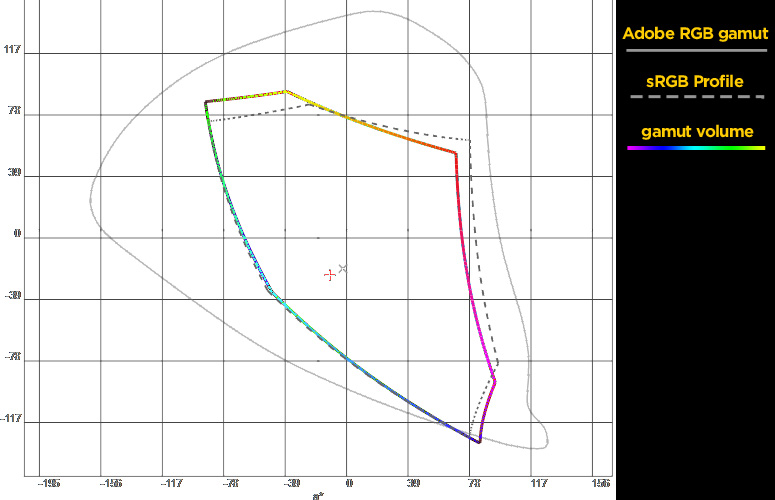
Click to EnlargeWhen we measured the Pulse 17's brightness with our light meter, it averaged a dazzling 300 nits, outshining the 266-nit desktop-replacement average. While the Krypton was a tad brighter, at 304 nits, the Stealth Pro and Alienware 17 averaged 281 and 268 nits, respectively.
On our colorimeter test, the Pulse 17 produced only 89.9 percent of the sRBG gamut. This edged out both the Stealth Pro (89 percent) and Krypton (88 percent), but fell short of the 98 percent category average. The Alienware 17 surpassed the competition, hitting 106 percent.
The Pulse 17 doesn't have the best color accuracy, either, as evidenced by its 9.4 reading on the Delta-E test (a score of 0 is perfect). That's short of the 5.2 average, but good enough to top the Krypton's result of 10.2. The Stealth Pro managed 8.4, while the Alienware 17 was nearly perfect, at 0.6.
Audio
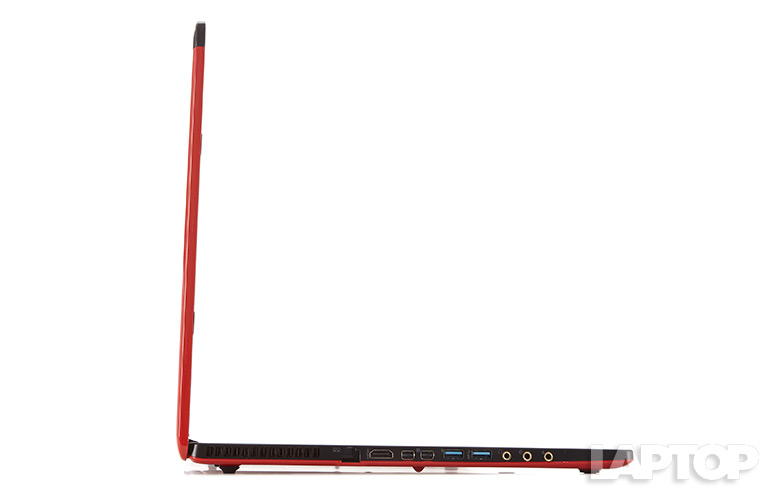
Click to EnlargeFor such a slim system, the Pulse 17's audio can really bring the noise. Equipped with a pair of Dynaudio speakers and a subwoofer paired with Sound Blaster Cinema 2 software, the Pulse 17 easily filled our medium-size test space with loud audio.
On the Laptop Mag Audio Test, the notebook hit 92 decibels, well above the 89-dB desktop-replacement average. It was enough to surpass the Krypton's 82 dB, but not the GS70 Stealth Pro (94 dB) or Alienware 17 (99 dB).
But for all that volume, the actual quality left us wanting. On Janelle Monae's airy ballad "It's Code," the singer's lovely soprano had no space to breathe against the bass guitar, electronic instruments and overly brassy percussion.
We had the same experience when listening to Alanis Morissette's "Ironic." It sounded like someone crammed the singer and the band in the backseat of a Smart car and dropped them in a lake.
Keyboard and Touchpad
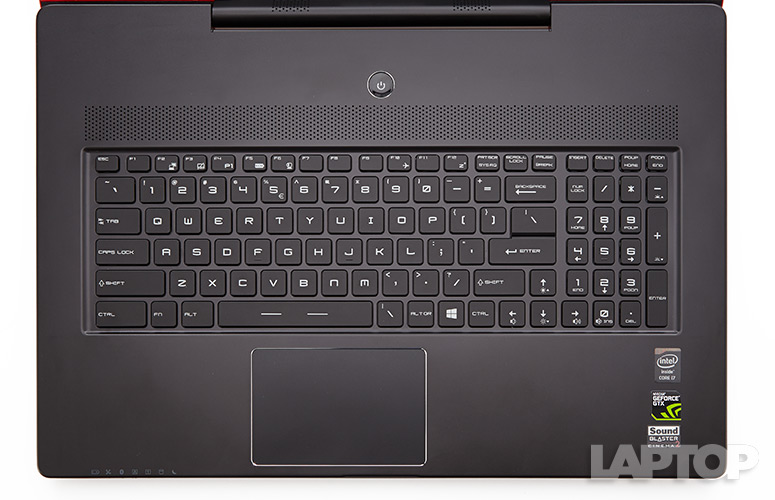
Click to EnlargeWe continue to be fans of SteelSeries keyboards. The Pulse 17's full-size island-style keyboard with a full number pad is nicely spaced, with springy feedback. The black, flat keys have a vertical travel of 1.5 mm, which is slightly less than the Stealth Pro's 2 mm but well within the acceptable range (1.5 to 2 mm). We matched our 55-words-per-minute average on the Ten Thumbs Typing Tutor test.
Measuring 4.1 x 2.7 inches, the Elan touchpad is comfortably large, enabling us to seamlessly summon the Charms bar or perform pinch-to-zoom, two-finger rotation and three-finger flicks. The bottom corners of the touchpad provided bouncy feedback with an audible click.
Heat
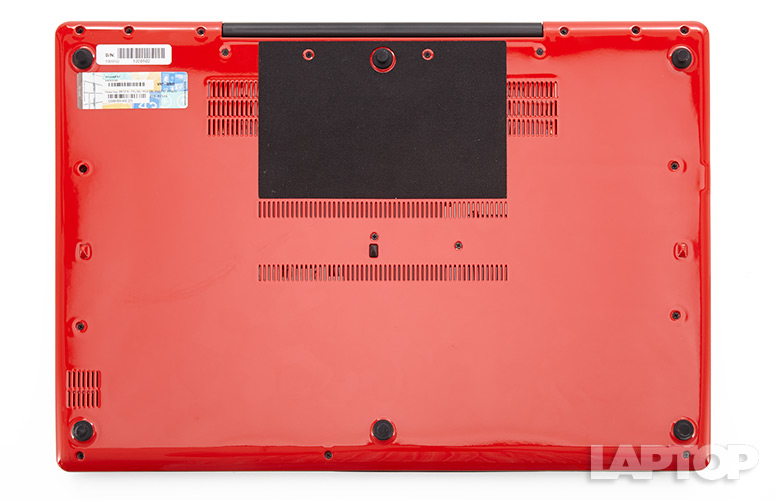
Click to EnlargeAfter we ran a full-screen Hulu video for 15 minutes, the touchpad and space between the G and H keys measured 82 and 86 degrees Fahrenheit, respectively. However, the undercarriage hit 105 degrees Fahrenheit, which is well above our 95-degree comfort threshold.
Things really heated up during a 15-minute play-through of "Metro: Last Light." The touchpad was relatively cool, at 88 degrees, but the space between the G and H keys jumped to a hot 102 degrees. The bottom of the notebook measured a scorching 145 degrees.
We could tell the laptop's fans were working hard to keep the temperature down because of the concentration-breaking whir. The fans' vents, located on the left and right of the notebook, blew at 138 degrees each.
Webcam
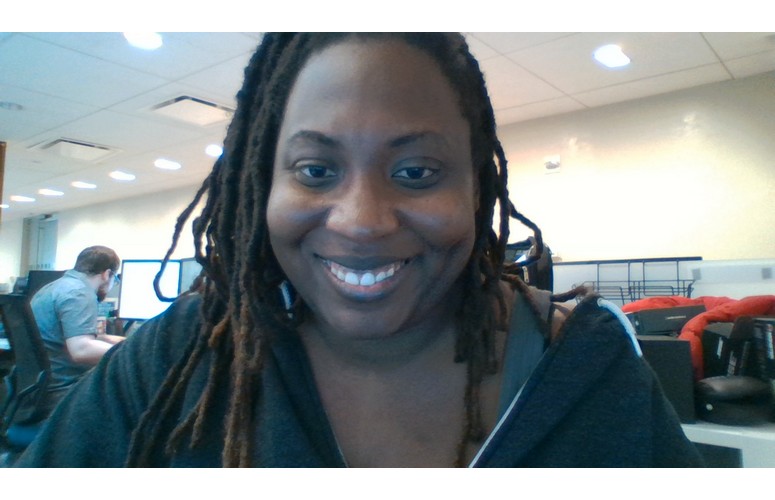
Click to EnlargeDespite having the ability to capture images and stills in 720p, the Pulse 17's webcam suffers from washed-out color and lackluster detail. Test shots taken under natural and fluorescent lighting added a bluish tinge to our chocolate skin.
We saw a few flyaway curls mixed in with our locks, but a persistent graininess meant that sharper details, such as our sweatshirt's fabric pattern, were hidden.
Ports
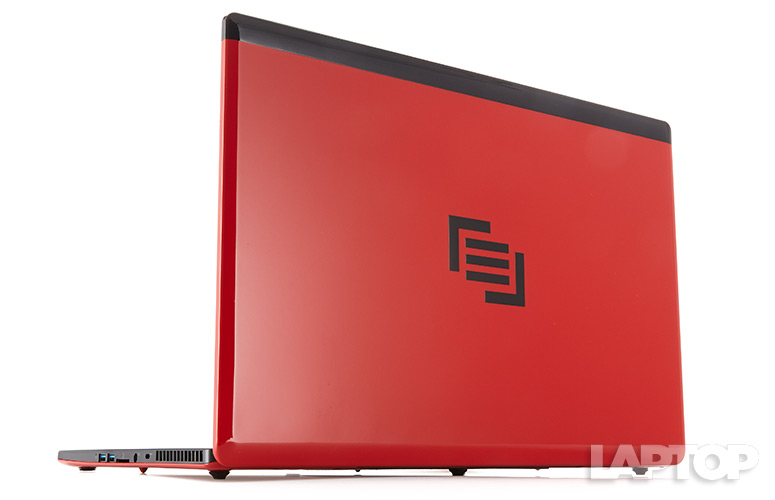
Click to EnlargeSince it uses the same chassis, the Pulse 17 has the same ports in the same locations as you'll find on the MSI GS70 Stealth Pro. A pair of USB 3.0 ports sits on the right, along with a 3-in-1 card reader, a secure lock slot and the power jack placed awkwardly in the center. The left side of the notebook has another pair of USB 3.0 ports, an HDMI port, dual mini DisplayPorts, Gigabit Ethernet and a trio of jacks for S-PDIF, headphones and mic.
Gaming
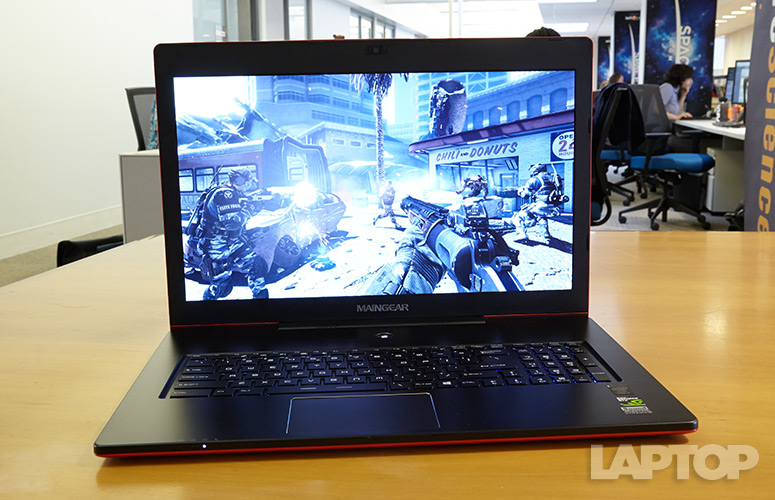
Click to EnlargeThe Maingear Pulse 17 packs an Nvidia GeForce GTX 870M GPU with 2GB of VRAM -- the second-most powerful in its lineup. There's also an Intel HD Graphics 4600 GPU for those moments when you just want to kick back and watch some replays from your latest victory.
The Pulse held steady as we went about our merry way, blasting Psychos in "Borderlands 2." At the highest settings, the gunfire flew as smoothly as the babbling brook that flowed in the background.
On 3DMark Ice Storm, the Pulse 17's score of 105,794 coasted past the 97,104 desktop-replacement average. The MSI GS70 Stealth Pro, which also has an Nvidia GeForce GTX 870M GPU, notched 109,015. The Alienware 17 and Digital Storm Krypton, which have Nvidia GeForce GTX 880M GPUs, scored 116,350 and 97,038 respectively.
MORE: Best Gaming Laptop 2014
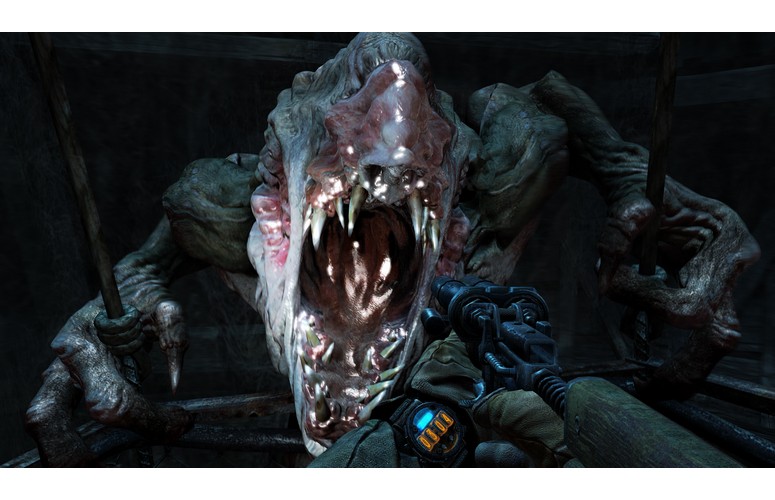
Click to EnlargeOn the "BioShock Infinite" benchmark test, the Pulse 17 performed at 121 frames per second on low at 1080p -- 10 frames below the 131-fps average. The Stealth Pro fared somewhat better, at 124 fps, while the Alienware 17 and Krypton hit 144 and 151 fps, respectively.
When we switched to the highest settings, the Pulse 17 fell to 52 fps, a hair below the Stealth Pro's 53 fps, and just missing the 55 fps category average. The Krypton and Alienware 17 obtained 65 and 63 fps, respectively.
On the "Metro: Last Light" test, the Pulse 17 notched 70 fps on low at 1080p, matching the Stealth Pro. However both notebooks were below the 82-fps category average. The Alienware 17 scored 82 fps, while the Krypton gave us an impressive 88 fps.
On the game's highest settings, the Pulse 17's frame rate dropped to 14 fps, missing the 21-fps average. The Stealth Pro performed slightly better, at 17 fps. The Krypton hit 24 fps, while the Alienware 17 registered 20 fps.
GeForce Experience
Click to EnlargeSimilar to other notebooks with Nvidia's newest GPUs, the Pulse 17 comes with the GeForce Experience app, which has several features designed to enhance gameplay and endurance.
Battery Boost lets you cap performance at a predetermined frame rate. The app will then throttle the notebook's components so that gamers can eke out a bit more juice without sacrificing too much performance.
Battery Boost Custom Game Settings will let you tweak individual titles even further. ShadowPlay enables you to record gameplay at resolutions of up to 1920 x 1080p and broadcast their gaming sessions to sites such as Twitch.
Performance
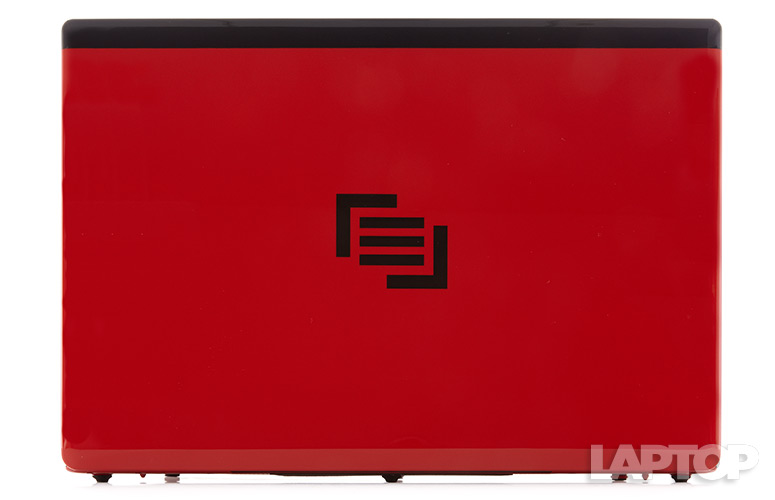
Click to EnlargeLet's get one thing straight: Slim doesn't mean frail. The Maingear Pulse 17's 2.4-GHz Intel Core i7-4700HQ processor with 16GB of RAM effortlessly streamed an episode of "Sailor Moon" from Hulu while running a system scan with 12 open tabs in Google Chrome, Internet Explorer and Mozilla Firefox.
The laptop scored 6,110 on the PCMark 7 benchmark, beating the 5,608 average. The Alienware 17 and its 2.9-GHz Intel Core i7-4910MQ CPU scored a lower 5,838, while the MSI GS70 Stealth Pro (2.5-GHz Intel Core i7-4910HQ CPU) and Digital Storm Krypton (2.8-GHz Intel Core i7-4810MQ CPU) hit a higher 6,193 and 6,437, respectively.
We're not sure how fast the Pulse 17 can go from 0 to 60, but it takes only 6 seconds to boot Windows 8.1, thanks to its dual 128GB SSDs in RAID 0 configuration (combined with a 1TB, 5,400-rpm hard drive). That's nearly three times as fast as the 17-second desktop-replacement average. The Stealth Pro (dual 128GB SSDs in Super RAID 2 configuration) performed the deed in 9 seconds. The Krypton (250GB SSD with 750GB 7,200-rpm hard drive) and Alienware 17 (dual 256GB SSDs with 1TB 7,200-rpm hard drive) were left in the dust, finishing in 14 and 23 seconds, respectively.
The Pulse 17 duplicated 4.97GB of multimedia files in 13 seconds, for a transfer rate of 391 MBps, surpassing the 229.3-MBps average and the Krypton's 159 MBps. Still, the Alienware 17 and GS70 Stealth Pro delivered even faster speeds of 463 and 565.5 MBps, respectively.
On the OpenOffice Spreadsheet Macro Test, the Pulse 17 paired 20,000 names and addresses in 3 minutes and 59 seconds. That was enough to beat the 4:37 average, but not enough to overcome the Stealth Pro (3:53), Krypton (3:33) or Alienware 17 (3:29).
Battery Life
The Maingear Pulse 17 lasted 5 hours and 15 minutes on the Laptop Mag Battery Test (continuous Web surfing over Wi-Fi at 100 nits of brightness). That's longer than the 4:06 desktop-replacement average. The MSI GS70 Stealth Pro (5:01), Alienware 17 (4:06) and Digital Storm Kypton (2:54) all turned in shorter runtimes.
MORE: 10 Laptops with the Longest Battery Life
Software and Warranty
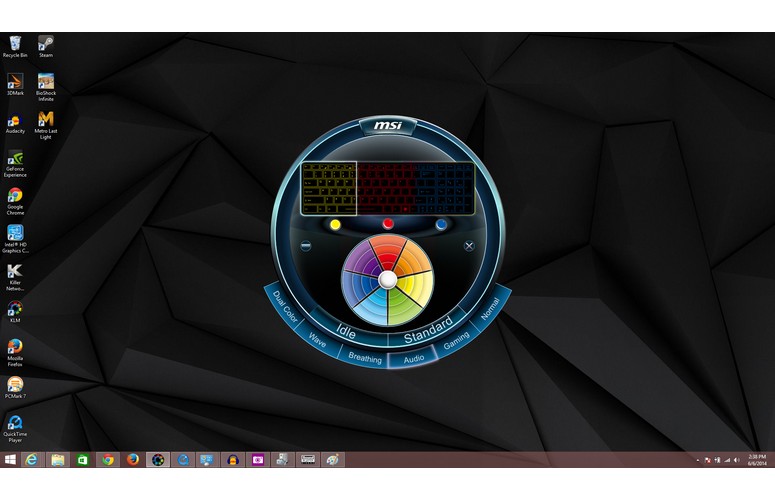
Click to EnlargeMaingear continues to run a tight ship when it comes to software. The Pulse 17 features the apps you've come to expect from a Windows 8 machine, including Mail, Calendar, Skype and Internet Explorer. However third-party additions are blissfully absent.
The Maingear Pulse 17 comes with a one-year comprehensive warranty with Lifetime Angelic Service Labor and Phone Support.
Configurations
Our $2,347 review unit of the Maingear Pulse 17 features a 2.4-GHz Intel Core i7-4700HQ processor with 16GB of RAM; dual 128GB SSDs in RAID 0 configuration with a 1TB, 5,400-rpm hard drive; an Intel HD 4600 Graphics GPU and an Nvidia GeForce GTX 870M GPU with 2GB of VRAM.
The base model is slightly less expensive, at $2,199, as it switches out the dual 128GB SSDs for a single 128GB mSATA SSD.
Bottom Line
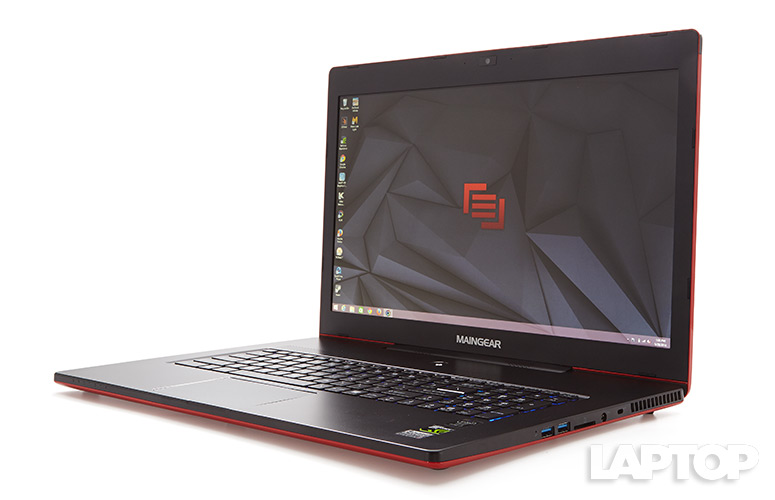
Click to EnlargeThe road to a truly portable 17.3-inch gaming laptop is paved with false starts, almost-theres and just-missed-its. However, the Pulse 17 is definitely on the right track: It's not only svelte and gorgeous, but packs a lot of power as well. The $2,347 configuration houses a Core i7 processor and Nvidia GeForce GTX 870M GPU with a searing SSD and pretty 1080p display -- all in a chassis that' s only 0.85 inches thick.
Maingear is charging a premium for its luxurious paint jobs, as shoppers can just as easily walk away with the $2,099 GS70 Stealth Pro. It's essentially the same notebook without the snazzy finish. Still, the Maingear is a great choice for gamers searching for a gaming rig with serious power that grabs every eye in the room.
Maingear Pulse 17 Specs
| Bluetooth | Bluetooth 4.0 |
| Brand | Maingear |
| CPU | 2.4-GHz Intel Core i7-4700HQ |
| Card Slots | 3-1 card reader |
| Company Website | www.maingear.com |
| Display Size | 17.3 |
| Graphics Card | Nvidia GeForce GTX 870M/Intel HD 4600 Graphics |
| Hard Drive Size | Dual 128GB |
| Hard Drive Speed | n/a |
| Hard Drive Type | Dual SSDs |
| Native Resolution | 1920x1080 |
| Operating System | Windows 8.1 |
| Optical Drive | None |
| Optical Drive Speed | n/a |
| Ports (excluding USB) | Microphone, Headphone, HDMI, security lock slot, Gigabit Ethernet, USB 3.0, S/PDIF, Mini DisplayPort |
| RAM Upgradable to | 16GB |
| Secondary Hard Drive Size | 1TB |
| Secondary Hard Drive Speed | 5,400 |
| Secondary Hard Drive Type | SATA Hard Drive |
| Size | 16.47 x 11.29 x 0.85 inches |
| Touchpad Size | 4.1 x 2.75 inches |
| USB Ports | 4 |
| Video Memory | 2GB |
| Warranty/Support | Lifetime Angelic Service Labor and Phone Support with 1 Year Comprehensive Warranty |
| Weight | 6.2 pounds |
| Wi-Fi | 802.11ac |
| Wi-Fi Model | Intel Dual Band Wireless-AC 7260 |

Sherri L. Smith has been cranking out product reviews for Laptopmag.com since 2011. In that time, she's reviewed more than her share of laptops, tablets, smartphones and everything in between. The resident gamer and audio junkie, Sherri was previously a managing editor for Black Web 2.0 and contributed to BET.Com and Popgadget.
